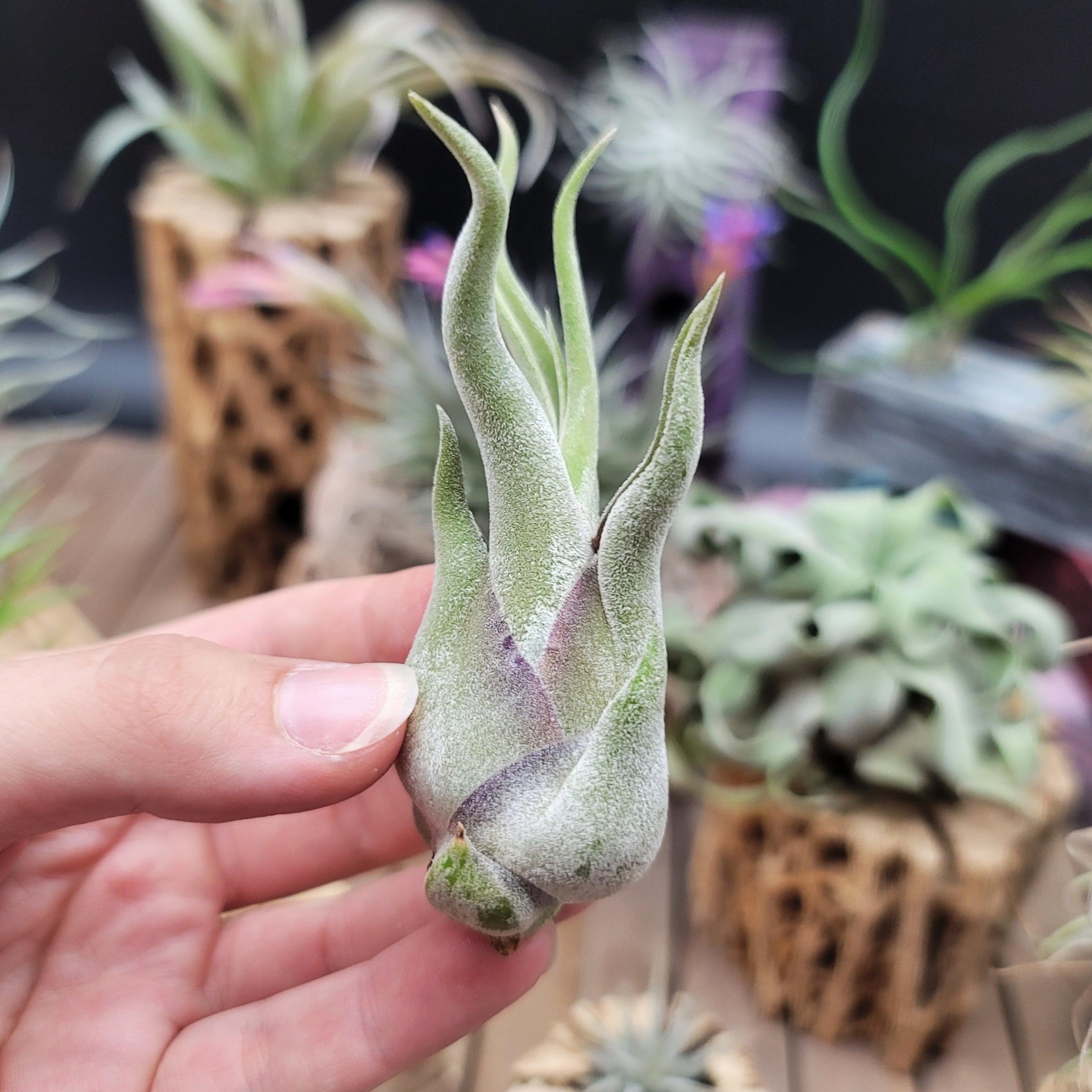*Air plant only, cholla pot sold separately
The Tillandsia caput medusae plant belongs to the Bromeliaceae family. This adorable air plant has an unusual appearance and makes for a good addition to greenhouses as well. With gorgeous thick silvery green leaves, Caput medusae pictures also turn out to be fantastic. It grows from 15 to 40 cm in height and has its origin in Mexico. Caput medusae cactus is commonly known by its common names “Medusa's head” and “Octopus plant”. These flowering air plants look attractive and are easy to care for.
Flowering
This plant blooms once in a lifetime. The purple and white color of the Tillandsia caput medusae flower is indeed striking. The blossoms are seen in early summer and are a visual treat.
Watering
Tillandsia caput medusae watering guide is not very complex. This flowering air plant requires frequent misting during hot months. You can also give it a good soak once a month. Let your plant dry out after watering to avoid the chances of rot.
Soil
Medusa's head gains its nutrients from the air instead of the soil. It also needs occasional fertilization for better health.
Hardiness
T. caput medusae is hardy in zones 9 to 11. As it is frost intolerant, it is better to place your Medusa air plant indoors if you live in regions with temperatures less than 55°F (12°C).
Light
Like other air plants, Tillandsia caput-medusae prefers bright indirect light. Although it can survive in direct full sun for a while, it does the best in partial shade.
Propagation
You can propagate your Caput medusae air plant by cuttings or by offsets called pups.
Its pronunciation may seem difficult but Caput medusae air plant care is quite simple! This low-maintenance indoor plant adds an exotic touch to any setting with its snake-shaped leaves. When properly cared for, Tillandsia medusa becomes beginner-friendly as well!
Growers Quick Reference Guide - Key Features
- Description
- Key Plant Features
*Air plant only, cholla pot sold separately
The Tillandsia caput medusae plant belongs to the Bromeliaceae family. This adorable air plant has an unusual appearance and makes for a good addition to greenhouses as well. With gorgeous thick silvery green leaves, Caput medusae pictures also turn out to be fantastic. It grows from 15 to 40 cm in height and has its origin in Mexico. Caput medusae cactus is commonly known by its common names “Medusa's head” and “Octopus plant”. These flowering air plants look attractive and are easy to care for.
Flowering
This plant blooms once in a lifetime. The purple and white color of the Tillandsia caput medusae flower is indeed striking. The blossoms are seen in early summer and are a visual treat.
Watering
Tillandsia caput medusae watering guide is not very complex. This flowering air plant requires frequent misting during hot months. You can also give it a good soak once a month. Let your plant dry out after watering to avoid the chances of rot.
Soil
Medusa's head gains its nutrients from the air instead of the soil. It also needs occasional fertilization for better health.
Hardiness
T. caput medusae is hardy in zones 9 to 11. As it is frost intolerant, it is better to place your Medusa air plant indoors if you live in regions with temperatures less than 55°F (12°C).
Light
Like other air plants, Tillandsia caput-medusae prefers bright indirect light. Although it can survive in direct full sun for a while, it does the best in partial shade.
Propagation
You can propagate your Caput medusae air plant by cuttings or by offsets called pups.
Its pronunciation may seem difficult but Caput medusae air plant care is quite simple! This low-maintenance indoor plant adds an exotic touch to any setting with its snake-shaped leaves. When properly cared for, Tillandsia medusa becomes beginner-friendly as well!














